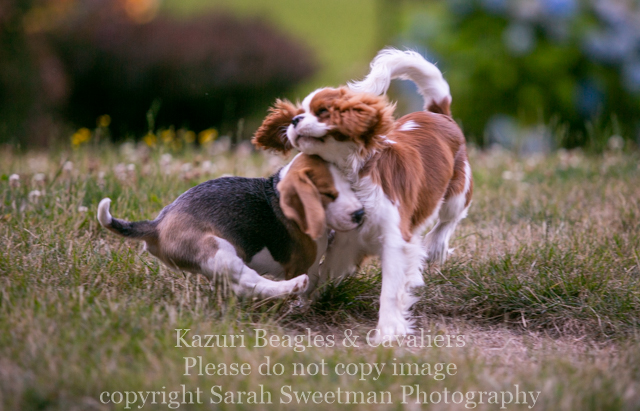As a reputable and responsible preservation breeder, I care about the well being of my dogs first and foremost.
In order for me to give my dogs the best possible life, while also being a part of my breeding program, I feel it is important for me to limit how many dogs I keep physically at my home. I do not believe in running a breeding program where dogs are living in kennels. All of my dogs are beloved pets and members of our family. If I had to wait till they passed on to continue my breeding program, I would have a very very small breeding program, and would only breed every 10+ years. That doesn’t really help me create a good breeding program.
To be a good breeder of quality dogs, we must keep, evaluate, and continuously add quality bloodlines to our breeding program. We like to keep a few of our pick puppies to monitor their growth and development. Some will eventually fit into our breeding program, but as we only breed the best, some also will not make the cut. We prefer to place these pick puppies in guardian homes so we can watch them grow and health test them and make the decision whether or not to breed them when the time comes.
Both beagles and cavalier king charles spaniels need to be a part of the family to develop their full potential. That is why we have a guardian program.
The guardian home program is an excellent deal for the dog, it’s a good deal for the guardian parents, and it’s a good deal for producing an exceptional breeding program. It’s one of those “win – win” situations for everyone involved.
The family receives a quality, health tested and top pick puppy. These puppies are sold at a small discount. I am able to improve the breed by using only the best for bettering the breed faster than I could if I had to limit myself to only the few dogs I can keep under my own roof as per the county guidelines and as is reasonable to love and care for them properly.
As a guardian home puppy grows up, we closely monitor the temperament, structure and health. As a guardian family, you will agree to meeting me, or allowing me to take the dog to health clinics to check eyes, hearts, hips etc. as well as perform genetic testing. If the dog is a great ambassador of the breed in all aspects, he/she may be used in our breeding program. We do not take back possession of the dog if they enter our breeding program but instead work closely with our guardians as a team. The dog will continue to live with their guardians full time in partnership.
Before any dog is bred all genetic testing will be performed as well as going to a reproductive specialist vet to be cleared for future reproduction. All of these health tests and breeding costs are done at Kazuri’s expense. If the dog does not pass all genetic testing and is not deemed healthy enough to carry/sire litters by the repro vet, he/she will be fixed at the expense of the breeder and all ownership paperwork will be transferred to the guardian at that time. If a female passes all testing and is cleared for reproduction her breeding career will begin on or after her second or third heat. She will be evaluated after every litter by the repro vet and both timing of breedings and length of breeding career will be at the breeder’s discretion upon the professional opinion of repro vet.
Females are generally in guardianship until her 5th year of age or typically 2nd (at most 3rd) litter – whichever comes first. Kazuri may not need her for this many litters, but we would rather set up the maximum expectation. Why 5 years? Well, a girl is not ready to have babies till 2 – 2.5. Since I work with the families and dont force a timeline on them, if she doesnt have a first litter till 3 or 3.5, we may need till 4.5/5 in order to have the 2nd litter, depending on how often she goes into heat cycle. Alternativly, if it works to do the litters at 2.5ish, your puppy may be “retired” by 4.
With regards to pregnancy and whelping the litter, she would have her pregnancy with her guardian home and then whelp and raise the litter at Kazuri. Guardian families receive a monetary gift for every litter as a thank you. And, of course the guardian family will be welcome to visit. After the completion of her final litter Kazuri will pay to have dog spayed and all ownership papers will be signed over to guardian family forever.
Males are in guardianship until a maximum age of 7 years of age. During this time he may or may not be needed for stud service. Guardian families will get a portion of the stud fee if they are ever used by outside breeders, as a thank you. At retirement, Kazuri will have male neutered and all ownership papers will be signed over to guardian parents forever.
General life expectancy of well bred and cared for beagle is around 15 years but can live up to 17 years with lots of love and care and a healthy cavalier king charles spaniel will usually live 12 years but can live up to 15 with proper care.
As an added thank you to our wonderful guardians I do allow guardians to reserve one puppy out of their guardian dog’s last litter to keep as beloved pet at half cost if they would like to.
Please send me a message for our full guardianship overview that goes into greater detail on how exactly the program works!
Mandatory qualifications for guardians
- MUST BE WITHIN 30 MINUTES OF WOODINVILLE, WA
- MUST BE IN A STABLE LIFE SITUATION (NOT PLANNING TO MOVE OUT OF THE AREA FOR AT LEAST 6 YEARS AND MUST ALWAYS RENT/OWN A PLACE THAT HAS YARD ACCESS AND ACCEPTS ANIMALS
- YARD MUST BE ESCAPE PROOF AND CLEARED OF POTENTIAL HAZARDS THAT A DOG COULD GET INJURED FROM
- GUARDIAN MUST NOT OWN ANY INTACT MALES/FEMALES OF OPPOSITE SEX OF GUARDIAN DOG OR ANY AGRESSIVE DOGS
- YOU MUST BE ABLE TO CARE FOR THE FINANCIAL DEMANDS OF A DOG. FOOD, VET CARE AND GROOMING IF NEEDED – ALL DAY TO DAY COSTS INCLUDING MEDICAL ARE THE RESPONSIBILTY OF THE GUARDIAN HOME
- YOU MUST BE READY TO DEDICATE TIME AND ENERGY INTO THE TRAINING OF YOUR DOG. ALL GUARDIANS MUST TEACH THE BASIC COMMANDS OF: SIT, DOWN, STAY, COME, NO, DROP IT, LEAVE IT. KNOWING THESE COMMANDS HELPS KEEP YOUR DOG SAFE
- MUST BE WILLING TO COMPLETE PUPPY CLASSES/CANINE GOOD CITIZEN CLASS AND POTENTIALLY SHOW CLASSES TO PREPARE DOG FOR FUTURE SHOWING
- MUST BE ABLE TO GIVE YOUR DOG AMPLE ATTENTION, EXERCISE AND AFFECTION DAILY. BEAGLES AND CAVALIERS ARE DEDICATED FAMILY DOGS AND REQUIRE LOTS OF LOVE
- MUST BE COMPLIANT WITH ALL TERMS OF THE CONTRACT INCLUDING NOT USING YOUR DOG FOR BREEDING YOURSELF
* Occasionally we do make exceptions to the mandatory requirements for unique situations. If you feel you are a great match overall aside from one of the requirements above, please contact me and explain. We mostly care our dogs are going to excellent families with lots of love to offer and do sometimes make exceptions on a case by case basis.




